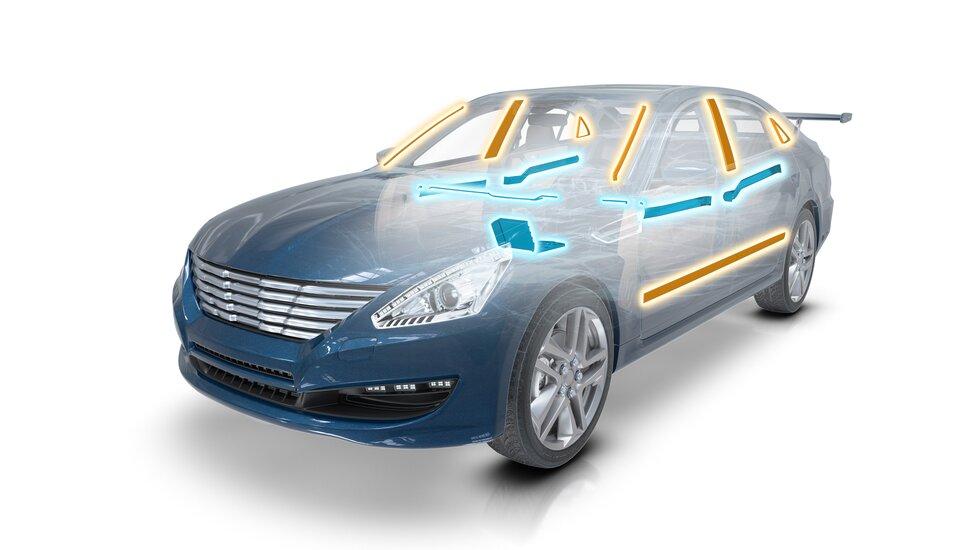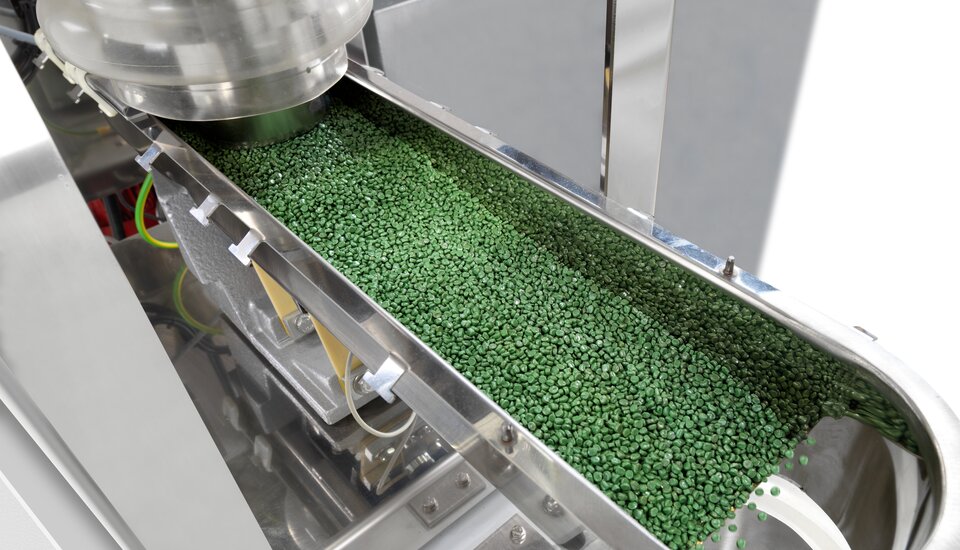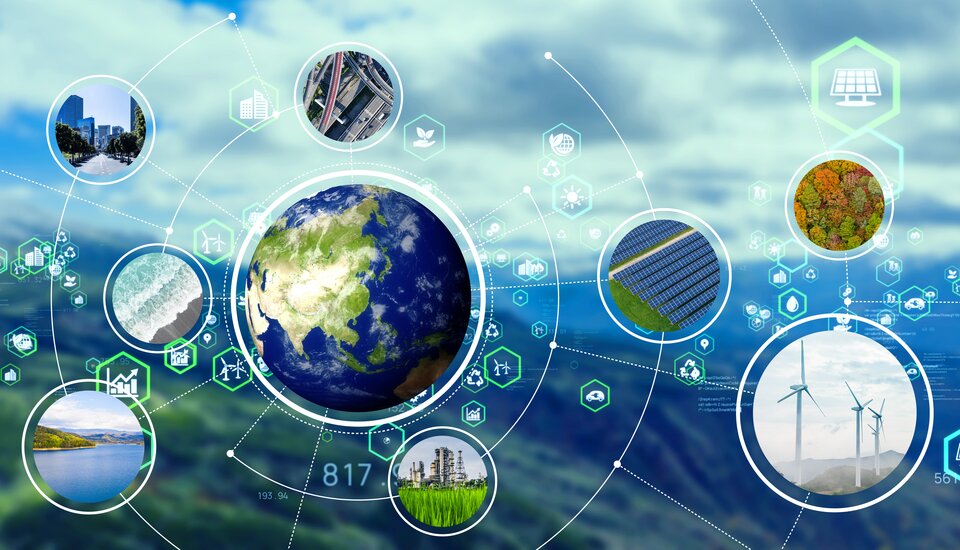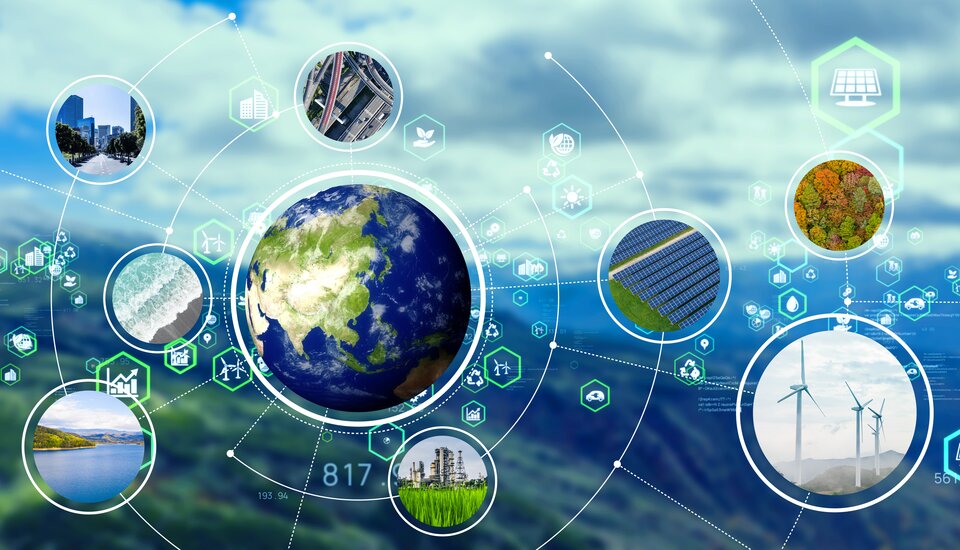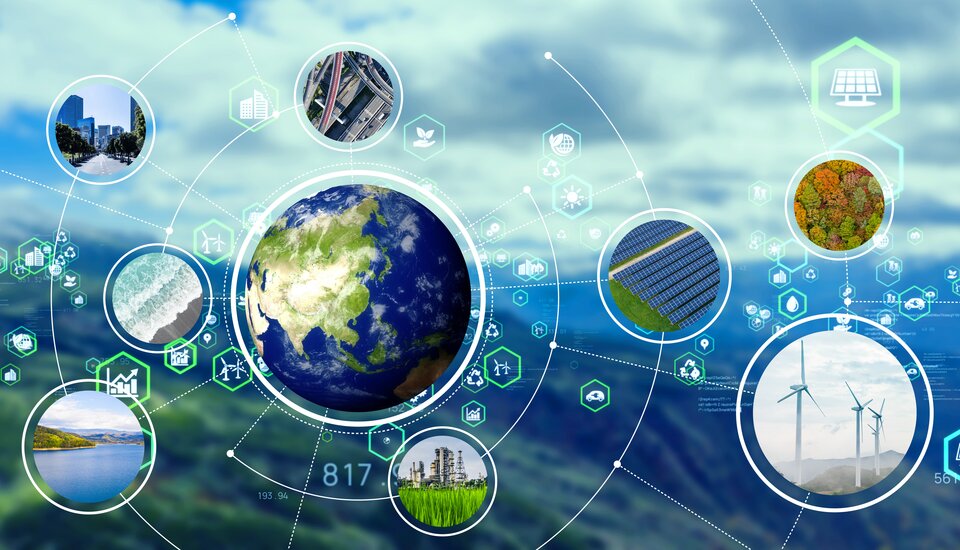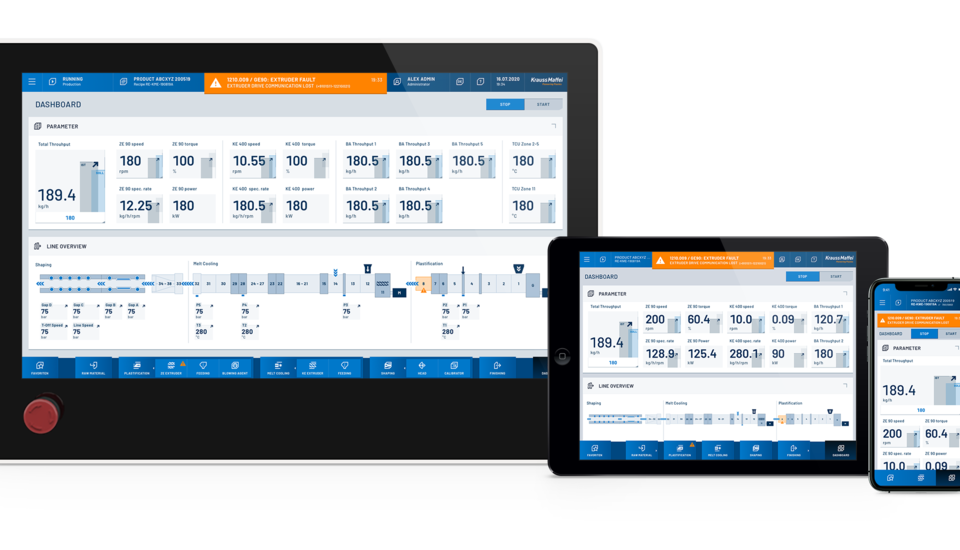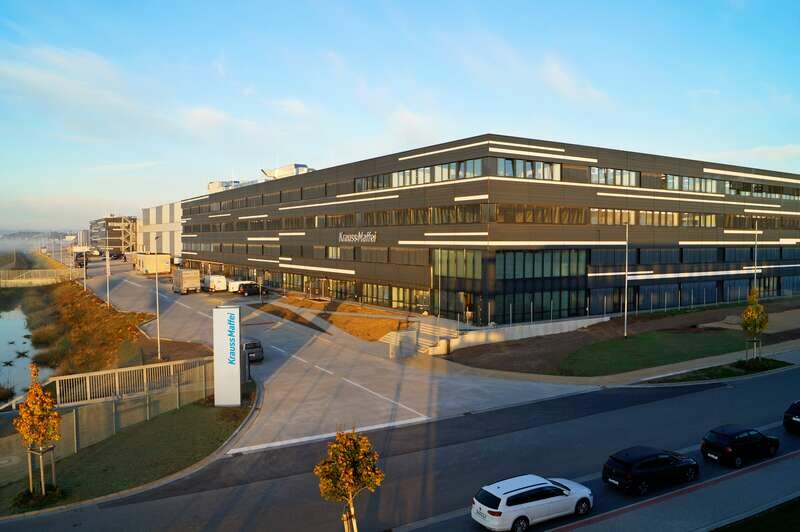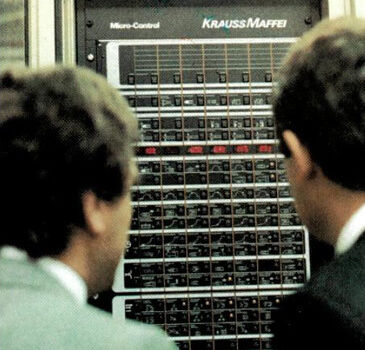
Durabilité
Fun for kids meets sustainability
| Petra Rehmet
Toy manufacturer BIG relies on sustainable production
The red Bobby-Car racer, the AquaPlay waterplay system or even entire playhouses. Products from the Simba Dickie Group are enjoyed in almost every children's room in the world. The plastic injection molded parts needed for these usually come from KraussMaffei machines. The toy manufacturer deliberately focuses on sustainability and recently began assessing the possibilities of extrusion and new digital solutions for its production.
For a long time, the toy manufacturer BIG, which also belongs to the Simba Dickie Group, has been focusing on recycling process-induced production waste that is mostly created in the area of blow molding for the BIG-Bobby-Car. Here, an extruded plastic hose is squeezed off at the top and bottom, and in the middle it is inflated so that it fills the mold cavity. BIG grinds up the resulting waste right at each machine and mixes it into the new polymer.
Other collected material goes to external service providers to be mixed and regranulated in a defined color. All in all, BIG products contain approximately 20 percent recycled plastic, and Michael R. Raum, Head of Production, would like to see this number increase.
"Unfortunately, it is not easy for us to buy more recycled material because we must satisfy the toy standard, and therefore we have to be able to rely on the actual composition. The products must not include any residue from heavy metals or the like."Michael R. Raum, Head of Production Simba Dickie Group
The political pressure to operate companies even more sustainably will continue to grow. Even supposedly small steps are important for this. For example, no longer packaging spare parts in plastic, but using little paper bags instead - something that BIG is already doing. The head of production, however, who is very supportive of resource conservation in principle, sees two sides to this, because "You are no longer able to see the content."

Michael R. Raum:
Head of Production of the Simba Dickie Group at his BIG workplace in Burghaslach, Franconia/Germany.
Fascination with BIG-Bobby-Cars continues into adulthood
Incidentally, the demand for spare parts and accessories has risen sharply during the COVID-19 pandemic because many families apparently used the lockdown to equip Bobby-Cars with a new horn and tires, or they treated themselves by buying a trailer. The durability of the product pays off here—another bonus point in the area of sustainability. The red racer made its debut at the 1972 Toy Fair. After plastic shovel loaders, ride-on ponies and Play-BIG toy figures, Ernst A. Bettag, the founder of BIG, had an idea that would shape the company for decades. At first a wooden model was used to optimize the shape, and then the transition to the familiar blow molding process was made.
Since then over 20 million Bobby-Cars have been shipped in a wide range of variations—and sometimes the owners feel so attached to them that they don't want to part with them even as adults. Michael R. Raum knows of fan races where the participants spend lots of money to equip their "racecars" with an optimized steering system, a seat pan and wheels, and then they zoom down the hill at about 100 kilometers per hour wearing protective clothing and a helmet. The fastest standard Bobby-Car to date rode at a swift 75 kilometers per hour.
BIG and the Simba Dickie Group have been successful for a long time because they continuously work on their products and the production systems. In Burghaslach, for example, there is a 43-meter-high automatic warehouse. The packaged toys from the assembly building go into this warehouse through a tunnel. From here they go directly to shipping when someone places an order in an online shop.

With another top seller in hand
The AquaPlay waterplay system also comes from KraussMaffei machines.
Future joint developments for digitalization and extrusion
For further production optimization, BIG has started a project with the Chair of Plastics Technology at the University of Erlangen. KraussMaffei and its DataXplorer are also involved. With the aid of this software, you can save 500 to 1500 signals per second, depending on machine size, in continuous curves. This allows you to obtain very deep insight into the entire process.
Manufacturing anomalies can be detected and eliminated before a large quantity of defective articles is produced. Ideally, the machine would make the required corrections on its own, and that is precisely the goal of the research project, which is designed to use algorithms to enable information to be fed directly back into the system. Until now, a person has always had to be the intermediary decision-maker and executor.
With the "socialProduction" digital tool, which is currently being used on 7 new machines at BIG, the machine is an active partner participating in its own chat room and, if necessary, sends messages that can be viewed by everyone. In this way, no more information is lost during a shift change, for example. The ever-advancing autonomy of production systems is important, primarily when one considers the increasing shortage of skilled workers in the area of plastics processing.

This hall is the source of lots of fun for children:
The injection molding department at BIG
BIG is also showing enthusiasm for development by considering moving in the direction of extrusion technology for a newly planned product. Since KraussMaffei is the only provider that manufactures plastics machinery for injection molding as well as for extrusion and reaction technology, it makes sense to team up and see what's possible. But for now no more details can be revealed.
In the future, BIG might want to manufacture wheels with soft components. Physical foaming using MuCell is in discussion, and in-mold labeling (IML) is becoming ever more important for surface finishing. So Michael R. Raum and his sales partner at KraussMaffei, Frank Burkhardt, will not run out of things to talk about.
Contact
cordula.wieland@kraussmaffei.com
